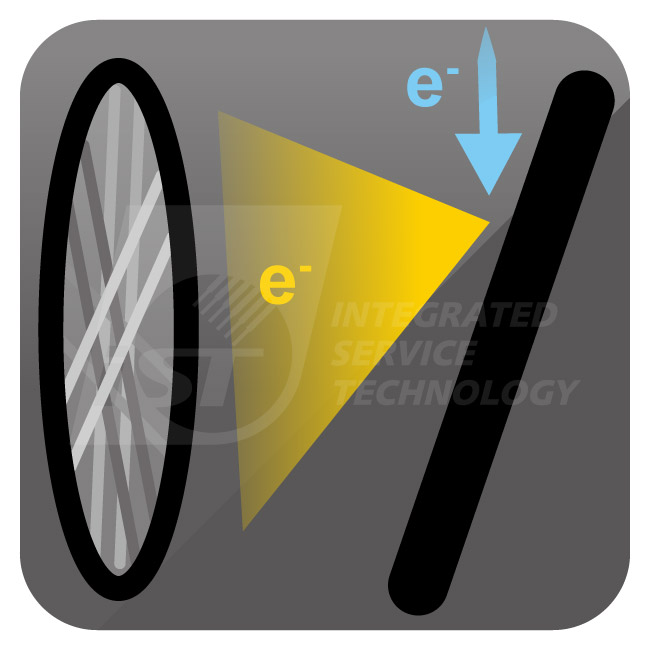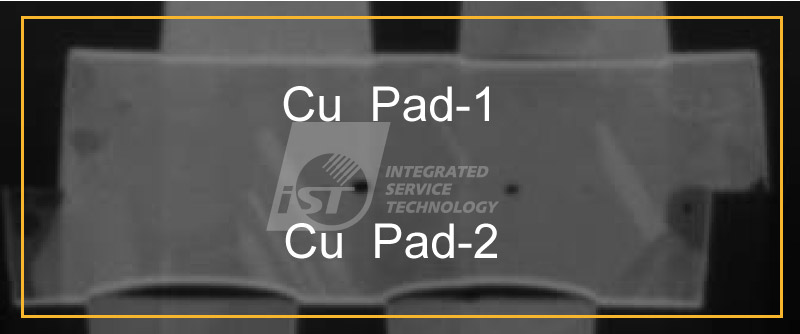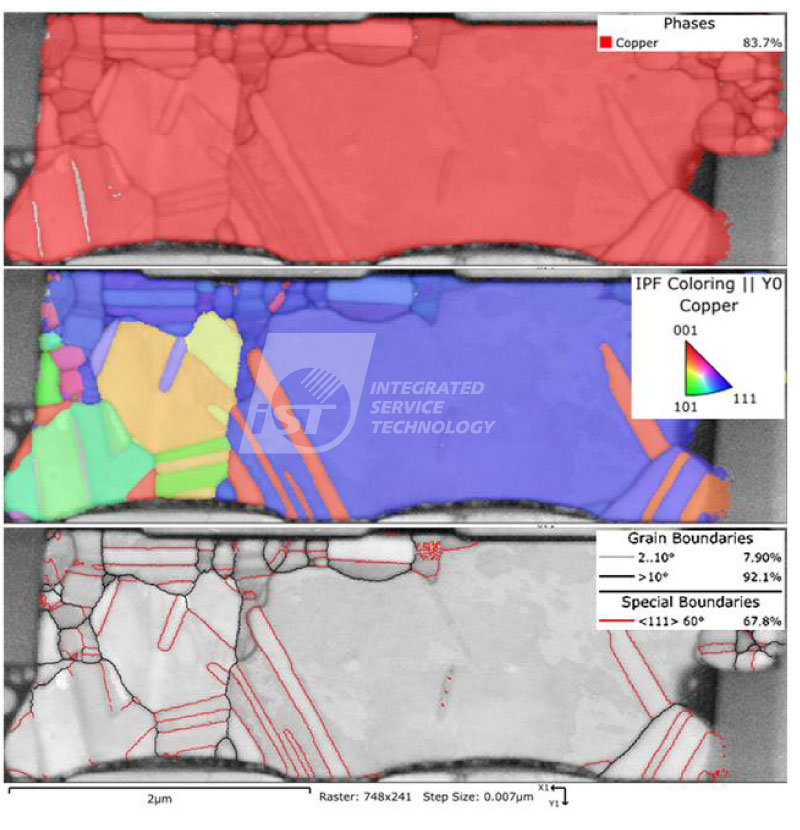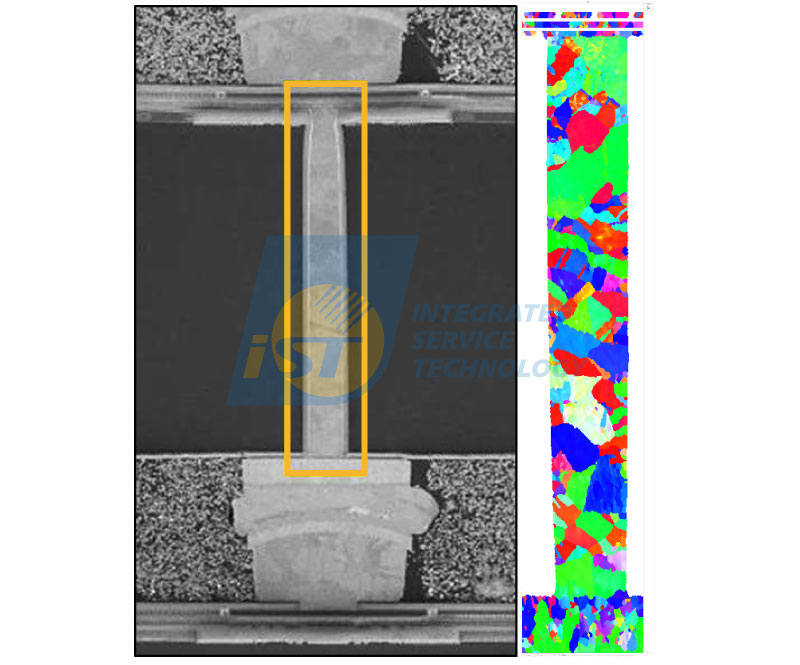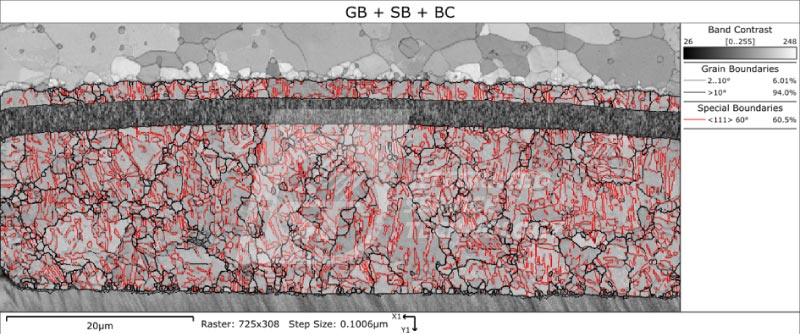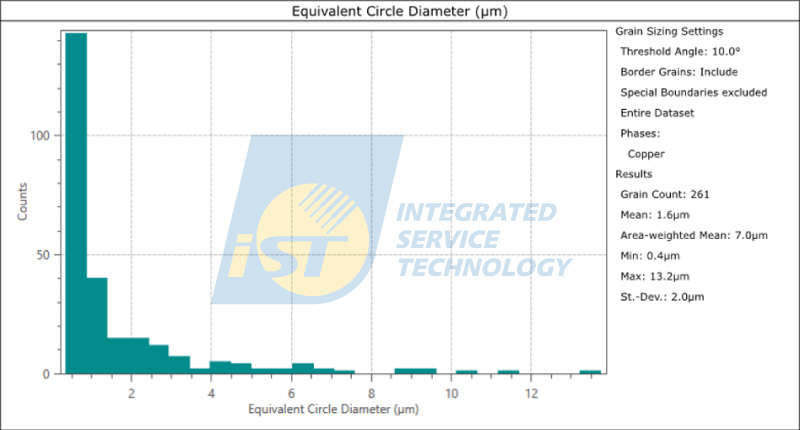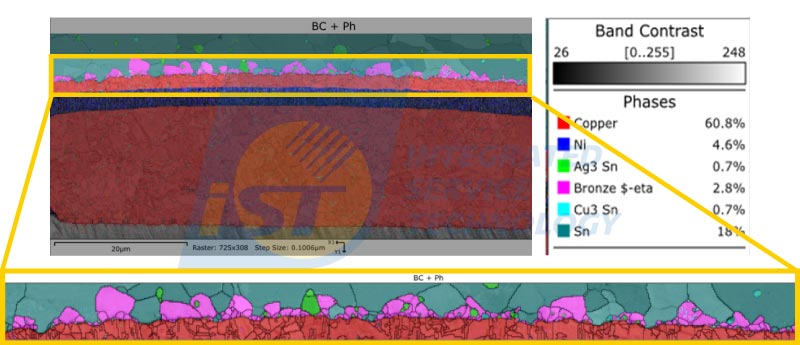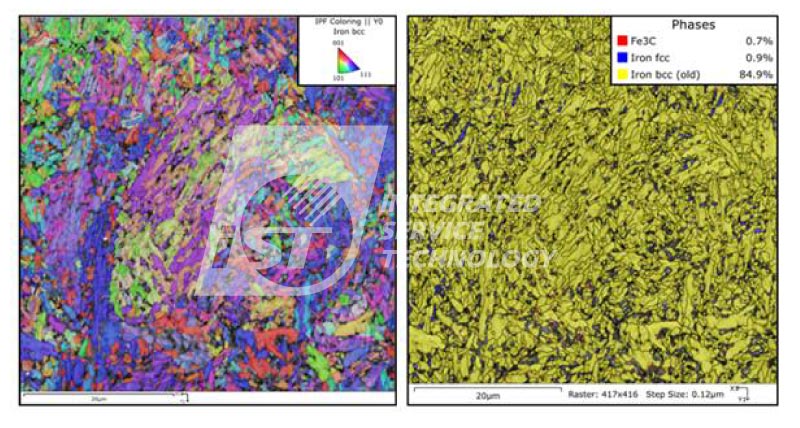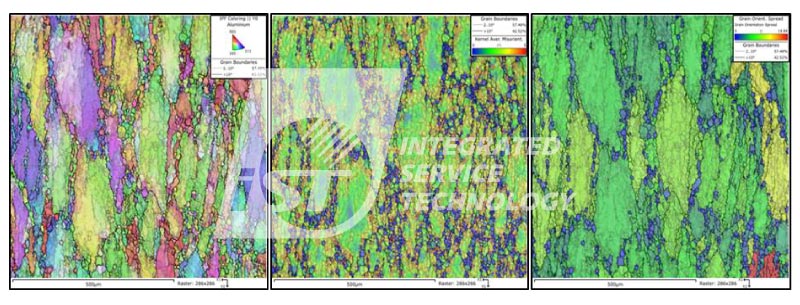Electron Backscatter Diffraction (EBSD) is a non-destructive analytical technique commonly used in electron microscopy (EM). When a high-energy electron beam interacts with a sample’s crystal lattice, it produces characteristic Kikuchi patterns. By comparing these patterns with a reference database, researchers can identify various microstructural features of the crystal, including grain size, lattice characteristics, grain boundaries, crystallographic texture, and strain
The Superiority of iST
Case Sharing
- Semiconductors: IC manufacturing process, advanced package
- Metals & Alloys: copper, iron, aluminum, nickel metals/alloys, etc.
- Intermetallic Compounds (IMCs): copper-based, nickel-based, titanium-based, etc.
- Ceramics: ITO, alumina (Al2O3), zirconia (ZrO2), SiC, WC, etc.
- Thin Films: crystalline coatings
- Minerals

Oxford Symmetry EBSD Detector
| Detection Limit | rain size>20nm |
|---|---|
| High Speed (pps) | 4500 |
| High Resolution (pixels) | 1244x1024 |
| High Angular resolution (Deg.) | 0.05. |
- Semiconductor
- Metalwork
- Aerospace: aluminum components, blades, valves, etc.
- Automotive: blades, valves, etc.
- Earth Sciences
Contact Window | Dr. Lin, Wei-jui | Tel:+886-3-5799909#6166 | Email: web_ma@istgroup.com

